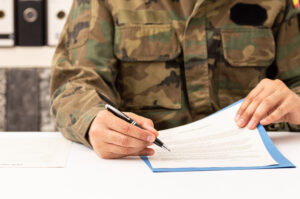Understanding Army Email Formats
Army email communication adheres to structured formats. This ensures clarity and consistency. Whether addressing superiors or peers, certain practices are essential. Familiarity with these conventions facilitates efficient communication.
The Basics of Army Email Protocols
The military relies on specific email protocols. Each email needs a clear subject line and appropriate salutation. Emails should begin with a succinct and informative subject line. The subject should reflect the email’s content concisely. This helps the recipient understand the email’s main purpose at first glance.
Salutations are equally important. Sir or Ma’am are commonly used when addressing superiors. If you’re unsure of the recipient’s gender, their rank and last name suffice. For instance, Sergeant Johnson is a respectful greeting.
Structuring the Content
The body of the email should be direct and precise. Start by stating the purpose. Follow this with necessary details. Avoid unnecessary jargon or overly complex language. Keep sentences short to maintain clarity.
When including multiple points, use bullet lists. This separates information and enhances readability. However, the list should be specific and concise. Avoid overly long paragraphs as they might obscure key points.
Using Signatures Correctly
End each email with a professional signature block. This includes your name, rank, position, and contact details. It’s the norm to include your unit or division. This allows recipients to easily identify your role and location within the organization.
- Name
- Rank
- Position
- Unit/Division
- Contact Information
Security Measures and Privacy
Emails may contain sensitive information. Therefore, it’s crucial to use encryption and follow appropriate security protocols. Always double-check details before sending confidential data. Certain content may require classification labels for proper handling.
Be mindful of the email’s content visibility. Access control within communication platforms helps protect sensitive information. If the discussion involves classified subjects, ensure compliance with security guidelines.
Responding to Emails
Timely and appropriate responses maintain efficient communication. Acknowledge receipt as soon as possible. If the email requires a detailed reply, inform the sender of the anticipated response time. Avoid leaving senders in uncertainty regarding their requests.
When responding, follow the same structural protocols. Ensure the reply’s subject line clearly identifies the thread. Quote relevant sections to enhance understanding without needing the original email for context.
Additional Tips
Be mindful of email etiquette. Avoid using all caps, as it’s perceived as shouting. Keep the tone professional and respectful. Double-check for spelling and grammar errors.
Attachments must be relevant and necessary. Mention the attachment in the body and describe its relevance. Confirm recipients can access and open the format of attached files.
Understand cultural sensitivities if emailing international colleagues. Different military branches and partners may have varied practices.
Managing Contacts and Distribution Lists
Organize your contacts carefully. Set up distribution lists for frequent group communications. Regularly update lists to reflect personnel changes.
Always review the addressees before clicking send. Ensure that replies go to the appropriate audience to prevent accidental dissemination of information.
Conclusion on Information Management
Army email formats are structured for clarity and security. Adhering to these practices ensures effective information management. Develop personal strategies to streamline and adapt to changes. Practicing these techniques enhances communication flow across the organization.







